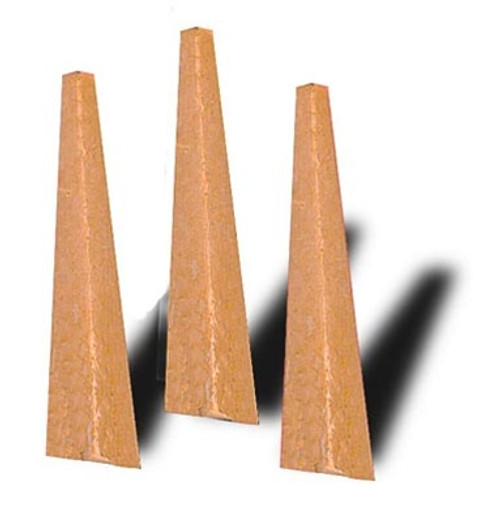Description
Orton manufactures four different types of cones (Small cones, Bar cones, Large cones and Self- supporting cones).
The Large and Self-supporting cones are used to measure temperature uniformity and/or if there was sufficient heatwork done to mature the ware. Cones indicate whether the ware received an adequate amount of heatwork to properly mature the clay or glaze. A properly fired cone will bend over with the tip of the cone almost touching the shelf. After firing a kiln, a simple glance at the cone can tell if the firing was successful.
The small and bar cones are mainly used in the kiln shut-off device called the Kilnsitter. This ia mechanical device that shuts off the kiln when the temperature inside is sufficient to cause the cone to deform under the weight of the Kilnsitter rod.
The only true measurement of heatwork is from a Large or Self- supporting cone placed on the shelf next to the ware.
Frequently Asked Questions about cones can be found on Orton website.
Resources may also be found on the Orton website
Self-Supporting Cones
Self-Supporting Cones are the most accurate and easiest to use witness cones available. They provide the same information as Orton Large Cones. The advantage of Self-Supporting cones is that they are the correct height (1 3/4" exposed above the base) and have the 8 degree bending angle built in. They do not require plaques. Self-Supporting cones can be set on any flat surface.
Self-Supporting Cones are available for use from 1087F to 3106F (586C to 1708C). Cones are numbered from 022 to 32. Cone 022 is the cone that will deform at the lowest temperature (1087F) and cone 32 is the cone that deforms at the highest temperature 3106F (1708C).
Self Supporting Cones are recommended by glaze and kiln manufacturers to achieve the best results.
Downloadable PDFs
Videos
-

How Do I seperate My Large Cones?
This video explains how to seperate Orton Large Pyrometric Con...
-

Can you explain the 4 different Cone Shapes?
Designed for Ceramic Arisits, this video shows the 4 different...
-

Explaining the Orton Cone Chart
https://www.ortonceramic.com/resources/pyrometric_cones/ The ...
-

When is a cone 6 a Cone 6?
When is a Cone 6 a Cone 6? All Potters want to know! This vid...
-

Pyrometric Cones Bending
https://www.ortonceramic.com Orton Pyrometric cones are used ...










